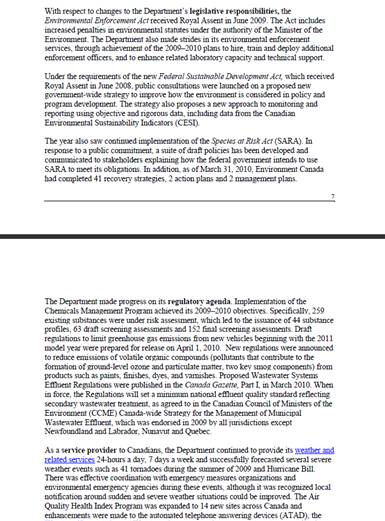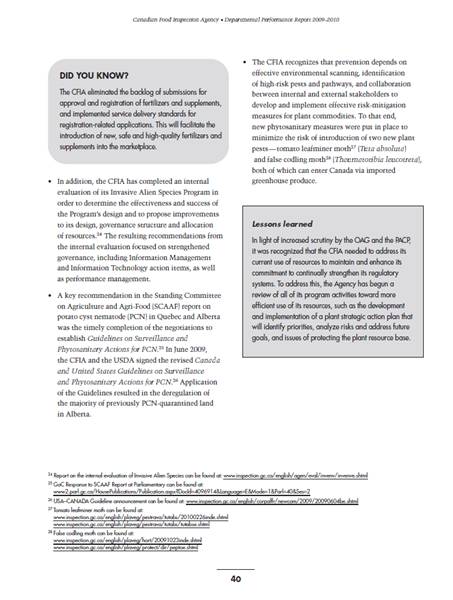Common menu bar links
Breadcrumb Trail
ARCHIVED - Performance Reporting: Good Practices Handbook 2011
 This page has been archived.
This page has been archived.
Archived Content
Information identified as archived on the Web is for reference, research or recordkeeping purposes. It has not been altered or updated after the date of archiving. Web pages that are archived on the Web are not subject to the Government of Canada Web Standards. As per the Communications Policy of the Government of Canada, you can request alternate formats on the "Contact Us" page.
Describe delivery mechanisms
Delivery mechanisms are the ways in which programs and services are supplied to Canadians. These include (but are not limited to) policies, programs and services, regulations, and grants. In large part, this is how Canadians will see themselves in public performance reports. Clearly describing this interface provides key contextual information regarding the benefits gained by Canadians in the delivery of programs and services, and it illustrates how their tax dollars are put to use.
The extent to which delivery mechanisms are appropriate, equitable, and properly managed, including the sound stewardship of resources, should be concisely demonstrated in both the planning and performance reports, using links to further information as required.
Given the range of mechanisms available, the department should also indicate why its choice of public policy instrument is the most appropriate and effective for achieving policy objectives. Service improvement activities that affect the department’s delivery mechanisms should also be part of the discussion.
Good practice: Describe delivery mechanisms.
Why is the following a good practice? In this example, the department identifies the principal means by which its programs and services are delivered to Canadians, for example, its role in legislation, regulation, and service delivery. Clearly describing this interface provides key contextual information regarding the benefits gained by Canadians in the delivery of its programs and services. It also illustrates how the department goes about spending public tax dollars.
Good practice example: Environment Canada DPR 2009–10

Include responses to parliamentary committees and findings of the Office of the Auditor General of Canada
The relationship between departments and Parliament is integral to Canada’s system of government and is not limited to the annual tabling of RPPs and DPRs. All interaction between the department and Parliament, including responses to parliamentary committees and findings of the Office of the Auditor General of Canada, who is an officer of Parliament, should be clearly documented in the report.
The report should include summaries of findings and responses and, keeping in mind the goal of comprehensive but succinct reports, provide Web links to the full versions. Information about how the department intends to take (specific) action can also be provided via Web links; this information may already be part of the response. Identifying actions to be taken illustrates an approach to management that incorporates lessons learned and demonstrates how the relationships between Parliament and departments produce positive change.
It should be noted that this good practice is also one of the recommendations (Recommendation No. 18) put forth in the sixth report of the House of Commons Standing Committee on Government Operations and Estimates, released in September 2003.
Good practice: Include responses to parliamentary committees and findings of the Office of the Auditor General of Canada.
Why is the following a good practice? In this example, the agency discusses a report by the Office of the Auditor General to Parliament. Specific actions are described, and a link to the full departmental response is included.
Good practice example: Canadian Food Inspection Agency DPR 2009–10

